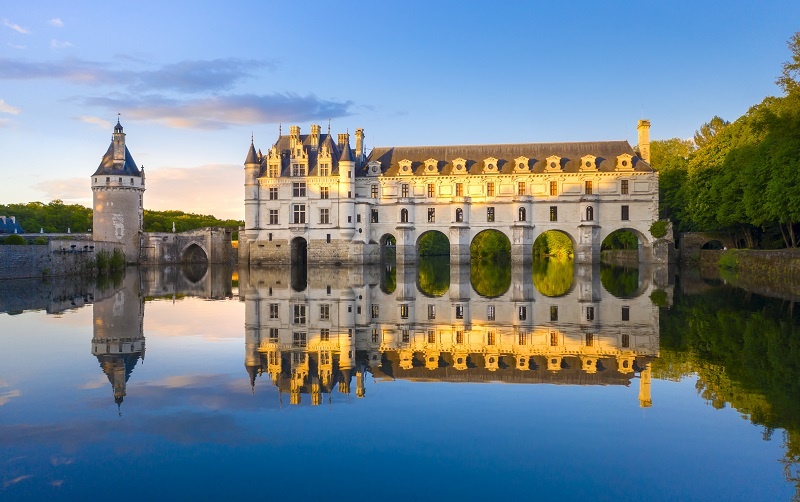THRILLING RED WINE DISCOVERIES LIE AHEAD IN FRANCE'S LOIRE VALLEY
France’s Loire River, the country’s longest, stretches from the Auvergne in the center of the country west to Nantes and the Atlantic Ocean. For the most part, the climate is cooler than most, and along with the minerally limestone soil covering much of its length, the region produces shimmering, sometimes electric white wines and earthy, often friendly, and at times, noble red wines that sing at the table. This makes sense, since much of the region is known as the Jardin de France, the garden of France.
Loire whites are much more familiar to us coming to us from Sancerre, Pouilly-Fumé, Vouvray, Savennieres, Anjou Blanc, and Muscadet, the latter where the ubiquitous oyster wine is grown. They are very popular with our customers, mainly because they provide such refreshment for our warm southern California climate.
Perhaps the biggest secrets in The Wine Country are the red wines grown in the Loire. Pinot Noir makes up 20% of Sancerre production, and it’s like no Pinot you’ve ever sampled—lean, earthy, minerally (yes, Sancerre, red, white and pink reflects its terroir), approaching a refined voluptuousness in warmer years, and racy leanness in cooler ones. Pinot Noir is also grown in Sancerre’s satellite appellations Reuilly and Menetou-Salon. You can reach Sancerre in less than two hours driving south from Paris on the autoroute.
CLICK HERE FOR OUR CURRENT SELECTION OF LOIRE WINES
Follow the river west, looping a little northwest through Orleans, then southwest to the Touraine, you can find Gamay quite distinctive and a little more brooding than the joyful Beaujolais south of Burgundy, and native red varieties like Pinot d’Aunis, ideal for the bistro carafe.
We are entering serious castle country, where French nobility would build their summer residences. They are the way we all imagine castles in fairy tales look, with conical spires, lavish gardens and beautiful facades. My favorite is the spectacular Chateau de Chenonceau, which has it all, including water features. This is also the home of beurre blanc and rich, but not heavy fresh-tasting cuisine. If you are travelling there, give yourself a few extra days to explore and savor the wine and food of this place.

Just west of the medieval city of Tours, we find the lands of Cabernet Franc, (not Bordeaux where it is a team player). According to Wine Grapes, Jancis Robinson's massive reference, the origin of Cabernet Franc is in the Basque country, migrating to Bordeaux, then the Loire in the 16th century. In the historic appellations of Chinon and Bourgeuil, Cabernet Franc is capable of aging twenty years or more, although most is consumed within the first 5 years of its life. You may find some Cabernet Sauvignon in the blend, but not more than 25% in Chinon and 15% in Bourgeuil. A tiny amount of Chenin Blanc is grown for the rare Chinon Blanc. Both regions make a small amount of rosé, which is sensational in good years.
Further westward the river reaches Saumur, where the finest red wines, also Cabernet Franc are grown in Saumur-Champigny. (White wines and some reds are labeled simply “Saumur.”) In recent years we’ve discovered some suave red wines in Saumur-Champigny from Thierry Germaine, and the wines of appellation leader Clos Rougeard, if you can find any, have the soul of Burgundy—in a class by themselves, and quite an accomplishment for an earthy, sometimes green variety.

Even further downriver is Anjou, where the main red grape is Cabernet Franc, but, like the Touraine, you may find Gamay bottlings and indigenous red varieties. In my experience, the Cabernet Franc in the reds from Anjou have an inviting suppleness to their texture and an agreeable gentleness that make them extremely inviting.
And that’s about it for the reds. As the Loire travels further west, it is too cool to achieve the ripeness needed for pleasant red wines. Just before emptying into the Atlantic, the Loire hosts the land of Muscadet, a racy-electric tart dry wine that begs for briny mollusks. But no red wine to speak of.












